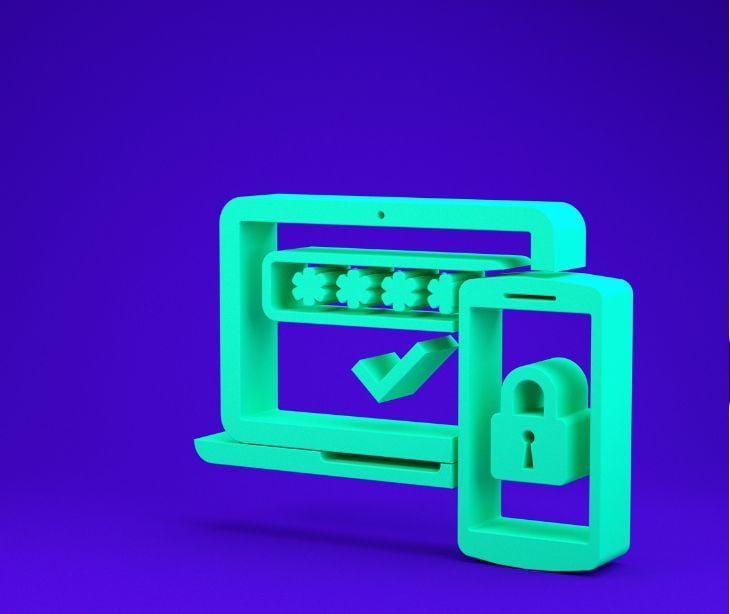
HealthTech notes that "As data breaches in healthcare persist, multifactor authentication could help close the gaps in security, shoring up defenses and preventing breaches, alongside other cybersecurity best practices."
With cyberattacks becoming more sophisticated, traditional authentication methods, such as usernames and passwords, are no longer sufficient to protect against unauthorized access.
This is where multi-factor authentication (MFA) comes into play. MFA is an authentication method that requires users to provide two or more verification factors to access a resource, such as an application, online account, or a VPN. By adding an extra layer of security, MFA significantly reduces the risk of successful cyber attacks.
Why is MFA important?
The primary benefit of MFA is that it enhances an organization's security by requiring users to identify themselves with more than just a username and password. While usernames and passwords are vulnerable to brute force attacks and can be easily stolen, MFA factors provide additional protection.
Organizations can increase their confidence in staying safe from cyber criminals by enforcing factors like thumbprints, physical hardware keys, or one-time passwords (OTPs).
Read more: Enhancing HIPAA compliance with multi-factor authentication
How does MFA work?
MFA works by requiring additional verification factors during the authentication process. One of the most common MFA factors is using one-time passwords (OTPs), typically 4-8 digit codes generated periodically or each time an authentication request is submitted. These codes are generated based on a unique seed value assigned to the user during registration and other factors such as a counter or a time value.
Types of MFA authentication methods
MFA authentication methods are typically based on one of three types of additional information:
Something you know
This type of MFA factor involves knowledge-based information, such as a password or a PIN. Users must provide this information and their username during the authentication process.
Something you have
Possession-based MFA factors include physical items or digital tokens that users must possess to authenticate themselves. Possession factors include access badges, USB devices, smart cards or fobs, security keys, and software tokens or certificates.
Something you are
Inherence-based MFA factors involve biometric information, such as fingerprints, facial recognition, voice, retina or iris scanning, or other unique physical or behavioral characteristics. These factors provide a high level of security as they are difficult to replicate or fake.
Examples of MFA
MFA combines multiple elements from the three main authentication methods to ensure a secure authentication process:
Knowledge factors
- Answers to personal security questions
- Passwords
- One-time passwords (OTPs) received via email, SMS, or mobile apps
Possession factors
- Access badges
- USB devices
- Smart cards or fobs
- Security keys
- Software tokens and certificates
Inherence factors
- Fingerprints
- Facial recognition
- Voice recognition
- Retina or iris scanning
- Other biometrics
- Behavioral analysis
MFA methods constantly evolve, and new authentication factors are introduced as technology advances. Some MFA solutions also incorporate machine learning and artificial intelligence (AI) to analyze additional factors and provide adaptive or risk-based authentication.
Related: What’s the difference between 2FA and MFA?
Location-based MFA
One of the newer subsets of MFA is location-based authentication. This method examines a user's IP address and, if available, their geographical location to determine if it matches the specified whitelist. Access may be blocked if the location information does not match, or additional authentication factors may be required to confirm the user's identity.
Adaptive authentication
Another subset of MFA is adaptive authentication, also known as risk-based authentication. This approach analyzes additional factors, such as context and behavior, during the authentication process.
A risk level is calculated by considering factors like the user's location, time of access, type of device used, and network connection. Based on this risk level, users may be prompted for additional authentication factors or even denied access altogether. Adaptive authentication adds an extra layer of security by dynamically adjusting the authentication process based on the perceived risk.
See also: HIPAA Compliant Email: The Definitive Guide
In the news
The use of a new phishing-as-a-service (PhaaS) platform called 'Tycoon 2FA' is gaining popularity among cybercriminals targeting Microsoft 365 and Gmail accounts in an attempt to bypass two-factor authentication (2FA) protection. Discovered by Sekoia analysts during routine threat hunting in October 2023, the PhaaS kit has been active since at least August of that year, when it was offered through private Telegram channels by the Saad Tycoon group. Similarities with other adversary-in-the-middle platforms like Dadsec OTT suggest possible code reuse or developer collaboration between them. A newer version of Tycoon, released in 2024, is said to be more covert than its predecessor, indicating ongoing efforts toward improvement. Currently using over a thousand domains, this service has been used over a thousand times for phishing attacks.
See more: Phishing kit that bypasses MFA targets Gmail and Microsoft 365
FAQs
What is MFA and why is it important in healthcare?
Multi-factor authentication (MFA) is a security mechanism that requires users to provide two or more verification factors to access a system or application. In healthcare, MFA is beneficial because it enhances the security of sensitive patient information, helps prevent unauthorized access, and ensures compliance with regulations such as HIPAA.
How does MFA help in complying with HIPAA regulations?
MFA helps comply with HIPAA regulations by adding an extra layer of security to protect electronic protected health information (ePHI). This reduces the risk of data breaches and ensures that only authorized personnel can access sensitive information, aligning with HIPAA’s security requirements.
Can MFA be integrated with existing healthcare IT systems?
Yes, MFA can be integrated with most existing healthcare IT systems, including electronic health records (EHR) systems, patient portals, and communication tools. Many modern MFA solutions are designed to be compatible with various platforms and can be customized to meet the specific needs of a healthcare organization.
What are the challenges of implementing MFA in healthcare, and how can they be overcome?
Challenges to implementing MFA in healthcare include user resistance, the cost of deployment, and the complexity of integrating with existing systems. These challenges can be overcome by providing training and communicating the imperativeness of MFA for protecting patient data, choosing scalable MFA solutions, and working with experienced vendors who offer seamless integration and support for existing healthcare IT infrastructure.
Subscribe to Paubox Weekly
Every Friday we'll bring you the most important news from Paubox. Our aim is to make you smarter, faster.




